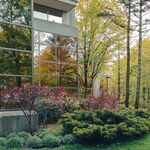11th
Senior Member
However, if you need to build any LRT lines outside of the old city, you'd have to build new maintenance house for the LRVs; then, the question comes, is it worth to build those facilities just for the one line (Eglinton in your suggestion)?..
We need to stop overbuilding in some areas and starving other areas, just because the technology choice is in vogue, whatever that technology may be. Subways everywhere isn't the solution. LRTs everywhere isn't the solution either. BRTs everywhere isn't the solution either for that matter. Every technology choice does have its place though. The technology choice should be made at the END of the analysis, not the beginning.
Could the solution be to expand the existing legacy network into the outer city instead?




